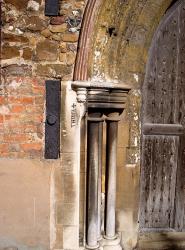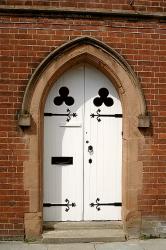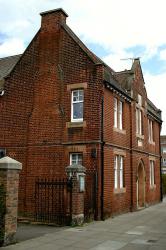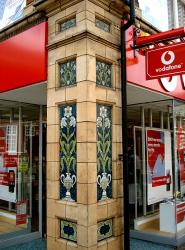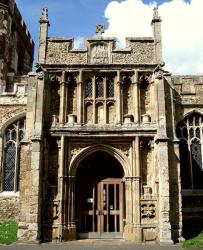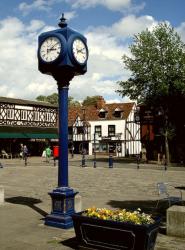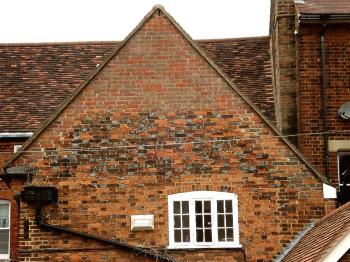St. Mary’s Graffiti
Much to the chagrin of the good citizens of the parish of St Mary’s Church in Hitchin, graffiti has appeared (or I should say more has appeared) on the north door. This is not a modern or ‘new’ phenomenon at all. One should look at the pillars of the door frame on both sides, to see lots and lots of carved graffiti dating back to the 1960s, 1950s, 1930s; even back a hundred years. In churches all around the parishes of Britain, one will find similar graffiti (and going back to 1700 say) Things such as names, love tokens or just dates. The Romans did this too, as did the Egyptians, Greeks, Vikings et al. As the expression goes, ‘There is nothing new under the sun’!
Warner’s Almshouses
Detail of the rather grand door in to the Warners Almshouses that were originally the parish Poor Houses. Then in 1760, they were rebuilt by Daniel Warner and then again in 1893 (and enlarged too) by funds left by Miss Elizabeth Ann Lucas, formerly of Hitchin who died in 1860. These Almshouses stood (and still stand) within the grounds of St Mary’s Church in the South East corner, by the River Hiz.
Moss’s Corner
In 1899, The Trooper inn or public house was pulled down to make way for W.B. Moss grocery shop (Probably built and completed in 1900) Vodafone shop now inhabits the building and has a huge garish shop front and signs. What is wonderful though is the rest of the building, with its very early usage of Art Nouveau tiles; Quite thrilling to have in a small market town at that time and for to it survive now.
This area used to be known as Guilden Square, (Because of The Brotherhood building opposite on High Street) Sheep Market, Cattle Market, Church Passage and now High Street. But after W.B. Moss built its shop, it has been known as Moss’s Corner. Up until the 1970s, this was where most of the town’s bus services started and finished and was known as Moss’s Corner on the bus timetables, although Moss’s shop had long since departed.
Love hearts Graffiti
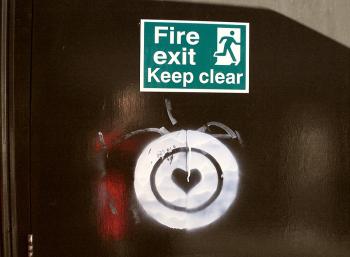
Apart from the now ubiquitous and wonderful but decaying ‘Dog Full Of Money’ stickers around town; There now appears some unusual but cute graffiti. Looking very much like ‘Love Hearts’ sweets, they liven up dull, out of the way and unnoticed places such as this doorway usually blocked by Starbucks Coffee Shop’s foul smelling and unsightly rubbish bins to the side of the shop in between Market Place and Churchyard.
Market Place Clock
At the very heart of Hitchin and its Market Place, stands a lovely Victorian Style clock donated by Gatwards Of Hitchin (W B Gatward & Sons) in the year 2000 to the town of Hitchin as part of the Millenial celebrations. This company was established in 1760 and is one of England’s oldest family jewellers.
Raised Roof
This photograph is an example of a building tha has probably had its roof raised. This particular one (On Bancroft by Sainsbury’s) seems to have had a half hipped roof from the original darker bricks that remain. The walls have been extended and patched up too. An example of just how ‘Organic’ buildings are in their constant flux and change like everything else. Buildings are rarely ‘fixed’ and forever have alterations; especially in towns.
Phillips Antiques in Bancroft
This fine two storey building now houses Phillips Antiques but was from c1700. There are two distinct sections to it on a subtle South/North divide-continuation. The northern side has the wonderful carved wooden porch made c1900; with its Corinthian columns and pilasters and carved modillions on the segmented pediment. The south side has the elliptically arched carriageway. Inside the building are panells brought from elsewhere and a copied staircase. A somewhat grandiose and aspirational building me thinks, but in keeping with the rest of society at that time.
